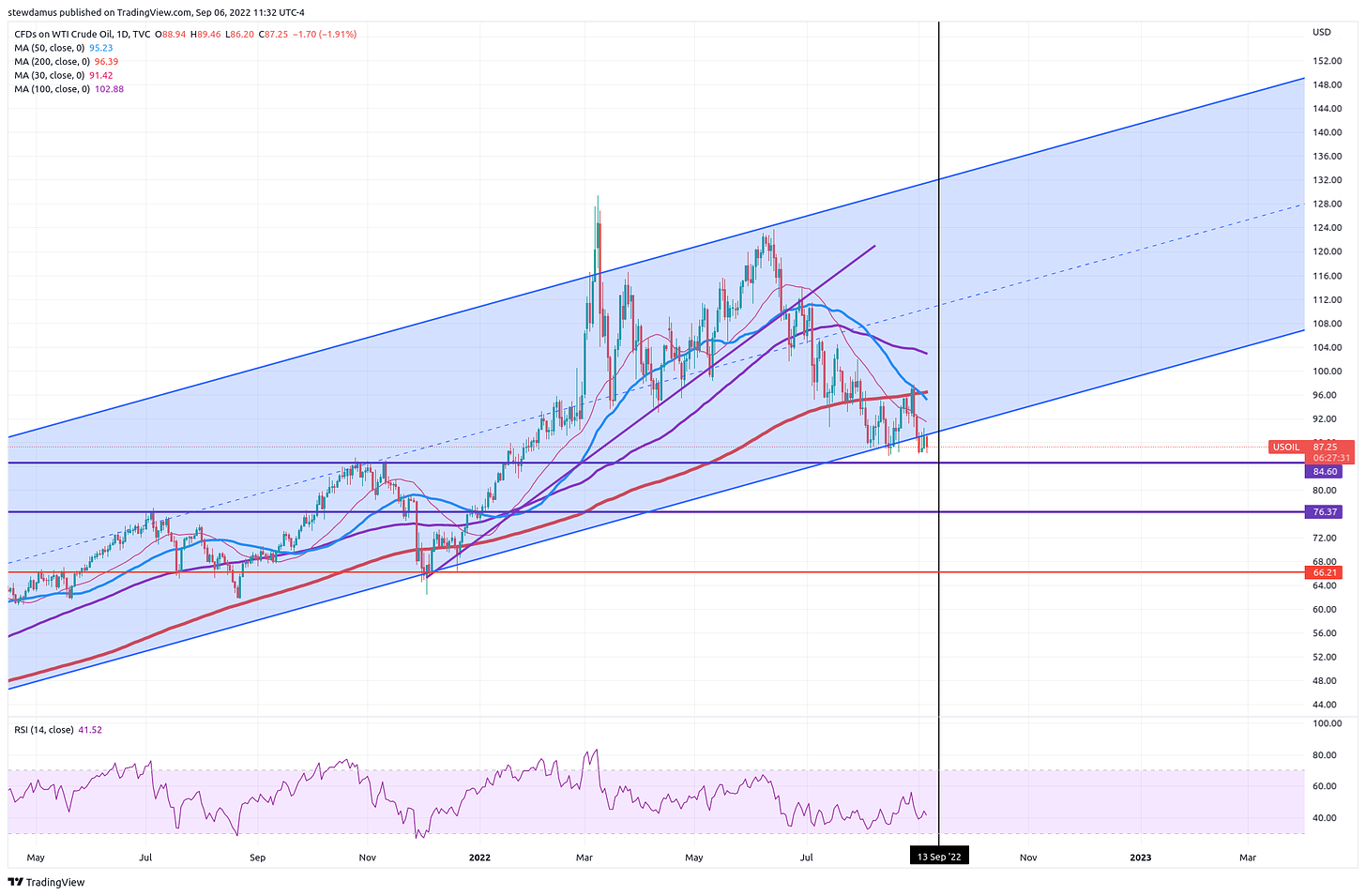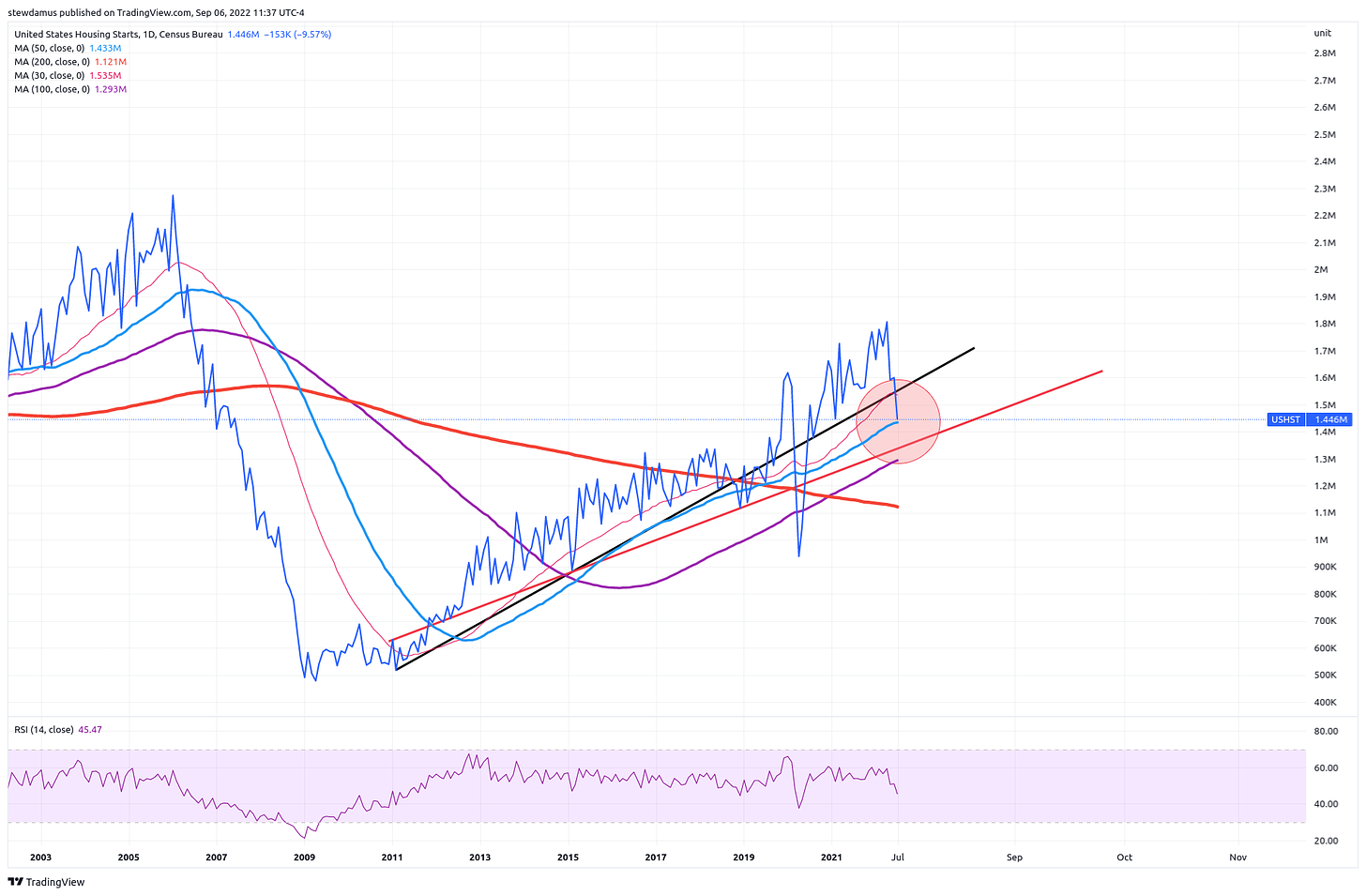Disinflation is Coming!
Here are the key #indicators I am watching this week before September 13th's #CPI data!
Traders,
September 13th is approaching quickly. We will soon know what the latest CPI data reflects, what it means for the #fed, and what it will mean for the #markets.
Will the Fed lower the rate increase pace? Could they even pause? I do think these possibilities are fairly strong, especially the first. While the U.S. markets have already baked in another 75 basis point hike, I believe that in addition to the next CPI data report, there are several additional big indicators that the Fed will likely consider and give strong weight to. These are the same indicators that I will be watching closely this next week.
The first is oil which is the leader in the energy sector. Oil is showing waning demand globally. This shows cracks in the major economies of the world, especially China, and China may very well be the first domino to fall in a row of dominos that could lead to a major macroeconomic recession slash depression. Please let me be wrong about the depression part. For the first time since March of 2020 US Oil has fallen below our ascending channel, a major disinflationary indicator, which, as I have stated, leads the energy sector. Demand always trumps supply and when demand is low for energy, it is telling us something about what may be coming in the next year or two. The fed will most certainly consider and digest this demand data.
Another data point I am watching is U.S. housing starts. You can see that, from a technical perspective, I have two major trend lines drawn. Both start 11 years ago in 2011. The black ascending trend line we have only broken below a few times in those 11 years. Only the Fed’s continued money printing lifted us back above. The bottom red ascending trend line, which we are quickly approaching, is significantly more disconcerting. Starts are currently resting on the 50-day. Should it break below, it will want to test this support once again. Any break below the red trend line would have serious implications for the future of the U.S. economy as the housing market typically leads the way in the U.S. economy. The fed will also watch this data closely for any future rate hike decisions. Going too strong may drive it below and trigger a recession or more.
And finally, we are starting to see an uptick in the unemployment rate. Already, we are hearing of the global economic slowdown. Alibaba, for instance, will be laying off up to 10,000 workers. Bears have been hanging their hats on the China economic collapse. So far, their fears are being validated. If China is in fact the first domino to fall, will it be made blatantly obvious that the Fed moved too far too fast? Will they reconsider their hawkish and aggressive sentiment and reaction? We will soon find out. A less aggressive rate hike of 50 basis points (or even a pause) would cause the markets to become extremely bullish short-term and remember, this would be great for the U.S. political party currently in charge.
Best on all your trades!
Stew






